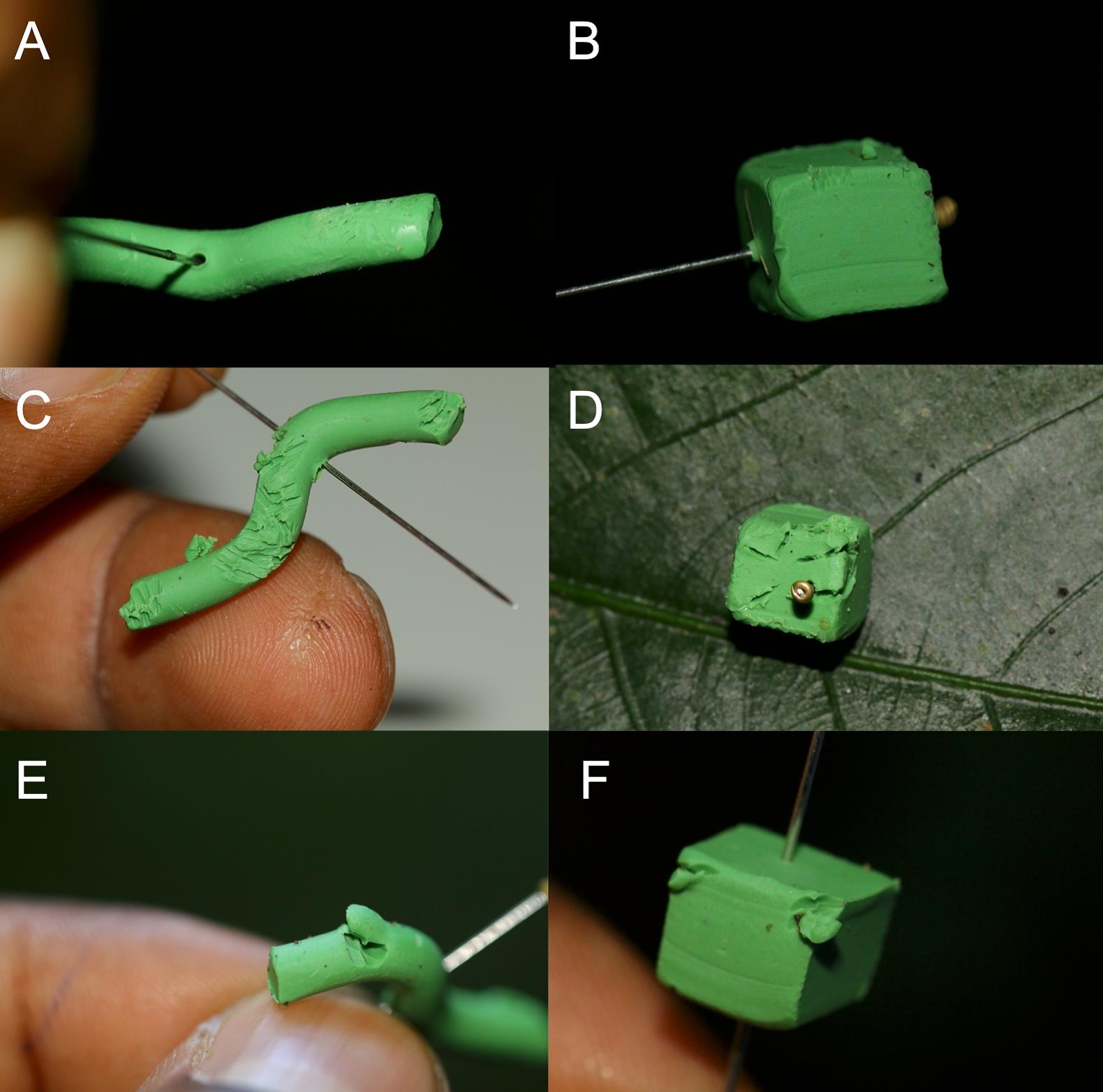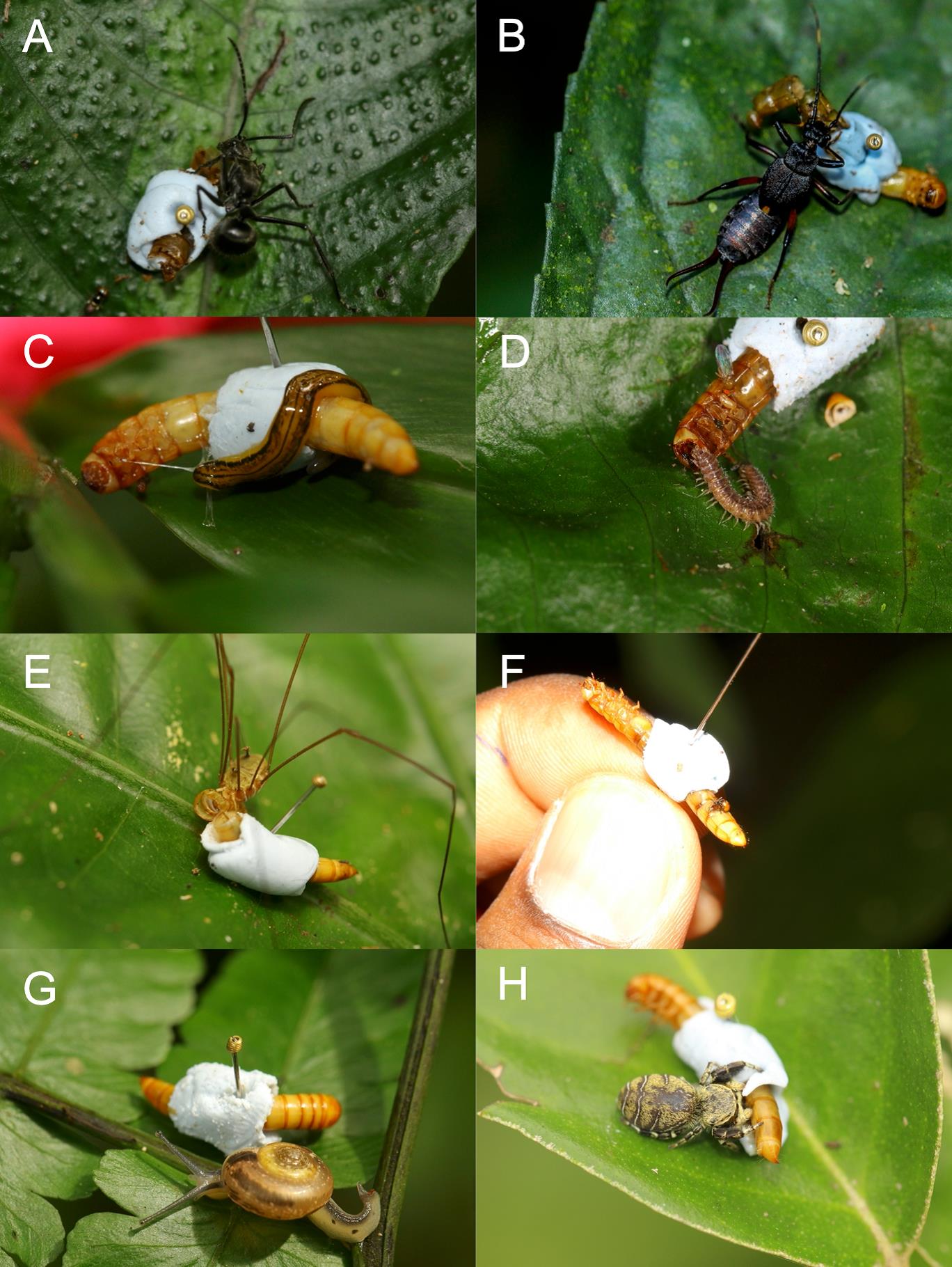Predation (including parasitism) is an ecological process through which biodiversity is shaped and maintained. Sentinel plasticine prey has been increasingly used to estimate predation pressure. However, the use of plasticine caterpillars may bias the estimation of predation pressure, as the method is designed for visually oriented predators.
In a study published in ENTOMOLOGIA EXPERIMENTALIS ET APPLICATA, the potential estimation bias caused by the use of plasticine models was valued by a team of young researchers who have ever received training at the Advanced Field Course in Ecology and Conservation - Xishuangbanna (AFEC-X).
The researchers compared predator attack rates between real prey – dead and live mealworms (Tenebrio molitor L.) (Coleoptera: Tenebrionidae) – and plasticine models in a monsoonal tropical rainforest of south-eastern China.
They found higher invertebrate predation on mealworms than on plasticine caterpillars, which suggest the possibility of underestimated predation intensity by invertebrates using plasticine caterpillars. Plasticine models, irrespective of their shapes, may attract predators and perhaps nonpredators, potentially undermining the assumption that predators distinguish the shapes of plasticine models and attack only caterpillar-shaped models.
The researchers then assessed the generality of the premise that predators distinguish the shapes and preferentially attack plasticine caterpillars over plasticine models in different shapes. The results showed that the attack rates on models of different shapes depend on predator composition of a particular locality at a given time.
Furthermore, the use of dead prey is likely to attract non-predatory scavengers, but the use of live prey is not an unbiased method to estimate predation pressure either. Nevertheless, live prey attract predators that otherwise cannot be detected using conventional plasticine models.
“In light of the results of our study, we suggest that, whenever possible, plasticine experiments should be ‘calibrated’ by employing other methods (e.g. using real live prey), so that the discrepancies between predators that attack plasticine caterpillars and those that do not could be estimated,” said Akihiro Nakamura of Xishuangbanna Tropical Botanical Garden (XTBG).
The research result is part of an independent research project at the AFEC-X 2017.
Contact
Akihiro Nakamura Ph.D Principal Investigator
Key Laboratory of Tropical Forest Ecology, Xishuangbanna Tropical Botanical Garden, Chinese Academy of Sciences, Mengla, Yunnan 666303, China
E-mail: a.nakamura@xtbg.ac.cn

Bite and scar imprint likely left by (A,B) ants, (C,D) non-ant invertebrates, and (E,F) vertebrates (rodents) on plasticine (A,C,E) caterpillars and (B,D,F) cubes deployed in a monsoonal tropical rainforest of south-eastern China. (Images by Thilina S. Nimalrathna)

Various invertebrates observed on live mealworms (Tenebrio molitor) deployed in a monsoonal tropical rainforest of south-eastern China: (A) ant, (B) dermapteran, (C) platyhelminth, (D) centipede (also a fly), (E) opilionid, (F) beetle, (G) land snail, and (H) spider. (Images by Thilina S. Nimalrathna)


